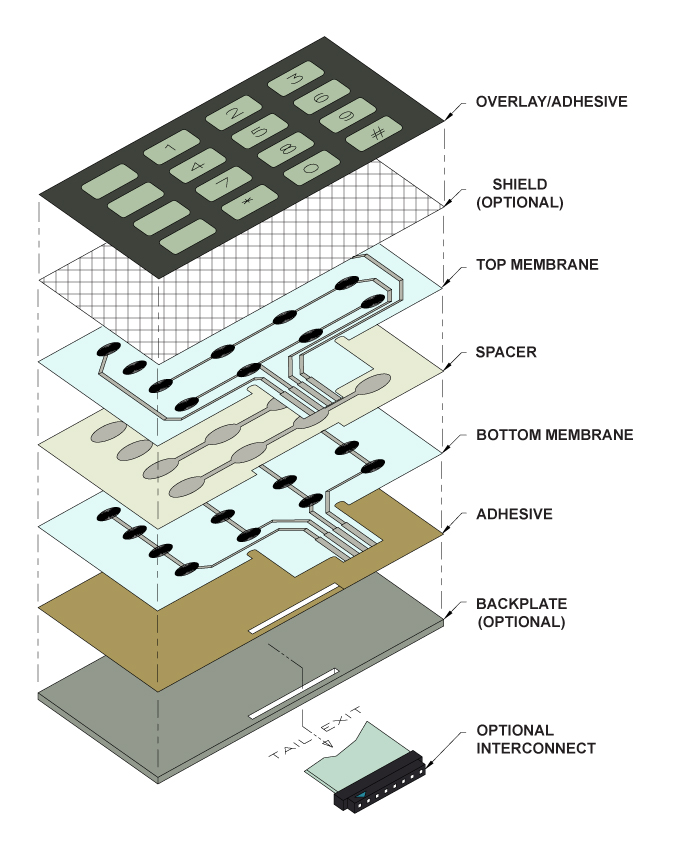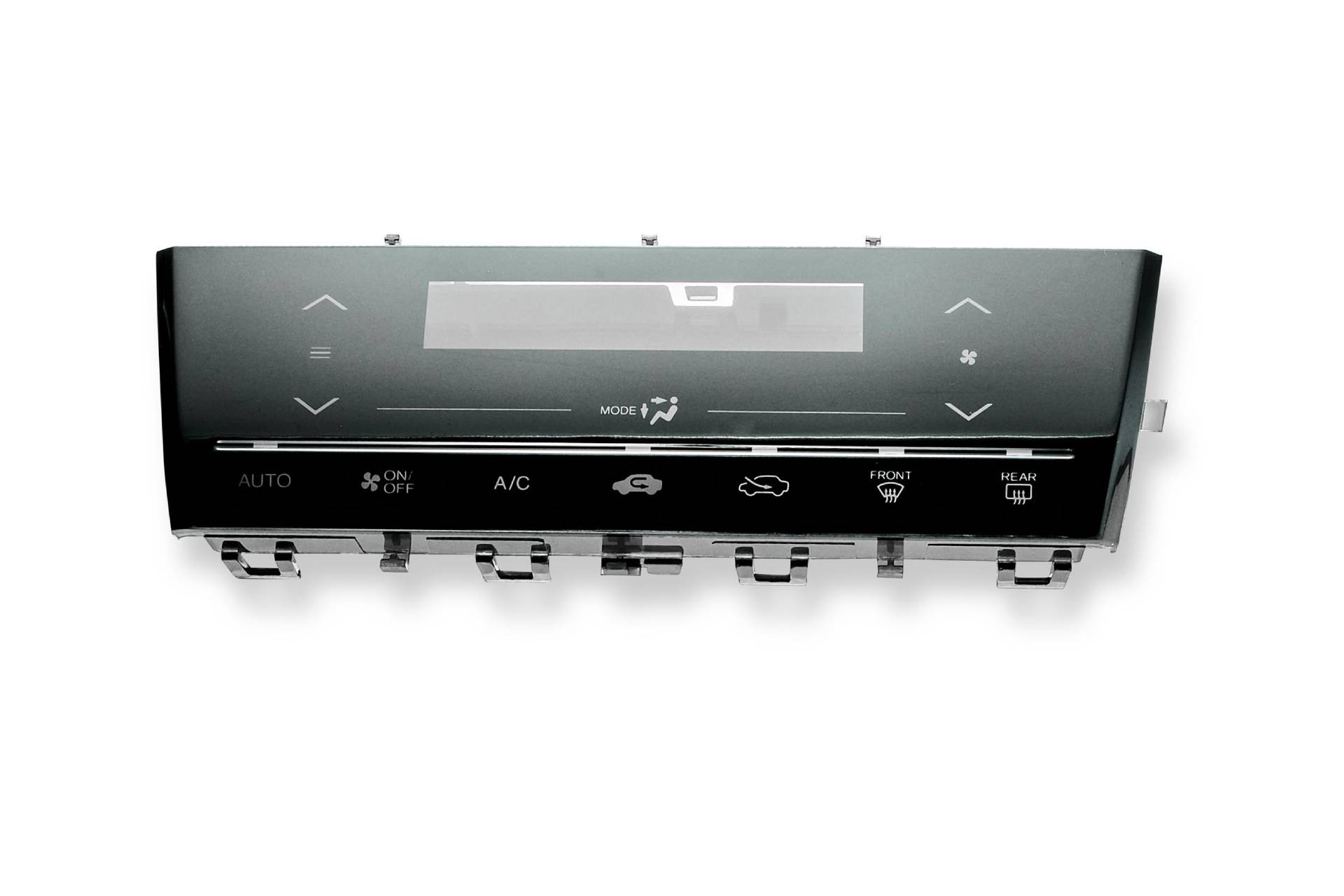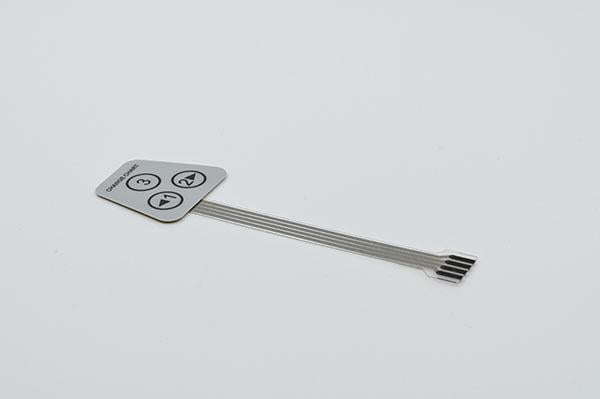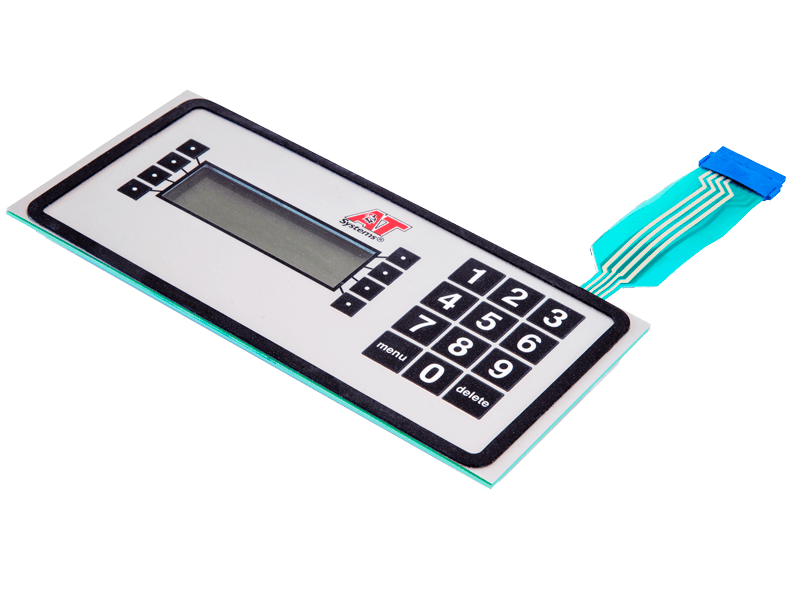All Regarding Membrane Layer Change: Comprehending Its Design and Functionality
When you think regarding the control interfaces in modern-day gadgets, membrane buttons often come to mind. Allow's explore what sets membrane layer switches over apart from various other control systems.
What Are Membrane Layer Switches?

Their seamless nature makes them easy to tidy and resistant to dust and wetness, a crucial function in many settings. Membrane layer switches can likewise be customized regarding form, size, and graphics, permitting manufacturers to create one-of-a-kind user interfaces customized to details items. And also, they're light-weight and slim, which aids in minimizing the overall bulk of gadgets. On the whole, membrane switches play a considerable duty in boosting customer experience across a vast selection of applications.
Just How Membrane Switches Over Work
When you push a secret on a membrane switch, it activates a straightforward yet effective device. membrane switch manufacturer. The leading layer, frequently made of adaptable product, presses down onto a conductive layer beneath it.
You'll notice that the tactile comments differs based on the button layout, using either a soft click or an extra pronounced feedback. As soon as you release the key, the membrane returns to its initial position, reopening the circuit and stopping the signal. This procedure occurs almost instantly, making certain a receptive user experience.
Membrane layer buttons are preferred due to their sturdiness and resistance to dust and dampness, making them ideal for different applications, from family appliances to clinical devices. Understanding this procedure assists you value their widespread usage.
Secret Elements of Membrane Layer Buttons
Understanding the crucial parts of membrane layer buttons is fundamental for understanding their functionality and layout. At the core, you'll find the graphic overlay, which offers the aesthetic user interface for customers. Underneath that, there's a spacer layer that divides the circuit layers, guaranteeing that they don't make contact until pushed. The circuit layer is where the magic takes place; it contains conductive traces that complete the circuit when you push the button. Another important element is the glue backing, allowing the button to stick to surface areas securely. Lastly, the safety layer guards versus environmental elements and use, prolonging the switch's lifespan. Each part plays a considerable role in making sure trustworthy efficiency and user interaction. By comprehending these parts, you'll gain understanding right into just how membrane layer switches run and their value in various applications.
Materials Utilized in Membrane Switch Over Style
The performance and durability of membrane switches heavily depend upon the products made use of in their layout. You generally come across polyester and polycarbonate as key substrates because of their exceptional strength and versatility. These products resist scratches and chemicals, making them ideal for requiring environments.
The conductive layers commonly make use of silver or carbon, chosen for their dependability and conductivity. membrane switch manufacturer. Silver provides remarkable efficiency, while carbon is a cost-effective alternative. For the overlay, you might consider a matte or shiny finish, depending upon your visual requirements and individual experience
Make certain to pick adhesives that my site withstand ecological factors like temperature and moisture. Picking the best materials will certainly ensure your membrane layer switch stands the test of time.
Layout Factors To Consider for Membrane Layer Buttons
While developing membrane switches, it's vital to take into account various aspects that affect their functionality and customer experience. Begin by concentrating on the format and button dimension; make specific they're intuitive and easy to navigate.
Verify your layout fits environmental variables, like wetness or temperature variants, which can influence efficiency. By meticulously considering these aspects, you'll create a membrane switch that enhances usability and satisfaction.
Applications of Membrane Layer Buttons
Membrane layer buttons are functional parts located in various applications, from commercial equipment to customer electronic devices. You'll see their effect in devices that call for long lasting user interfaces and in gadgets that benefit from sleek layouts. Understanding these applications assists you appreciate the performance and functionality of membrane buttons in daily technology.
Industrial Equipment Usage
When you're aiming to enhance the functionality of commercial equipment, membrane layer switches use a trusted solution that incorporates sturdiness with user-friendly style. These switches are ideal for rough atmospheres, providing resistance to dust, dampness, and chemicals. You'll locate them in control panels for making makers, HVAC systems, and clinical gadgets, where precision and responsiveness are crucial. Their reduced profile indicates they fit flawlessly right into various tools, saving useful space while maintaining simplicity of use. With personalized graphics and backlighting options, you can develop an instinctive interface for operators, boosting performance and safety and security. Plus, their long life-span lowers upkeep prices, making them a smart financial investment for your industrial applications. Welcome membrane switches to enhance your procedures and improve general performance.
Customer Electronics Integration
In the domain name of consumer electronic devices, membrane buttons play a necessary role in improving user interaction and device capability. Membrane buttons likewise guarantee sturdiness and resistance to dust and wetness, expanding the life-span of your electronic devices. By picking membrane buttons, you enhance not just the functionality however also the style of your tools, making daily communications smooth and pleasurable.
Advantages and Disadvantages of Membrane Layer Buttons
While membrane switches provide a series of benefits, they likewise feature some downsides that you must take into consideration. One substantial benefit is their small design, making them ideal for space-constrained applications. They're likewise cost-effective, giving a sturdy option with a low manufacturing cost. In enhancement, their smooth surface is very easy to clean, enhancing health in atmospheres like medical facilities.

Membrane buttons can have a shorter lifespan contrasted to mechanical buttons, specifically under heavy use. They can likewise be less tactile, which may impact customer feedback throughout operation. Stabilizing these pros and disadvantages will certainly help you determine if membrane buttons are the best fit for your task.
Regularly Asked Inquiries
How Long Do Membrane Switches Over Normally Last?
Membrane switches over commonly last in between 5 to one decade, relying on usage and ecological problems. You'll wish to review aspects like wear, exposure to dampness, and temperature level changes to determine their durability successfully.
Can Membrane Switches Over Be Custom-made for Certain Styles?
Yes, you can tailor membrane switches to fit particular layouts (membrane switch manufacturer). You'll have the liberty to select colors, forms, and layouts that match your task's needs, ensuring they mix flawlessly with your general aesthetic
What Is the Expense Variety for Membrane Switch Manufacturing?
The price array for membrane button production generally why not find out more falls in between $1 and $10 per device, depending on elements like style complexity, quantity, and materials. You can get quotes from suppliers to locate the most effective option.

Are Membrane Changes Water Resistant or Immune?
Membrane layer switches can be made to be water resistant or immune, relying on materials used and building and construction approaches. If you require them for wet atmospheres, guarantee you define those needs during the style process.
How Do Membrane Layer Changes Compare to Typical Switches?
Membrane layer switches are generally thinner and extra versatile than traditional switches, providing a smooth style. They're often simpler to cleanse and incorporate, but could not offer the responsive feedback you're utilized to with mechanical alternatives.
Final thought
